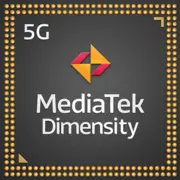MediaTek Dimensity 6100 Plus

MediaTek Dimensity 6100 Plus: A Balance of Capabilities and Affordability in 2025
April 2025
The modern smartphone market offers a multitude of processors, but finding the optimal combination of price and performance is not easy. The MediaTek Dimensity 6100 Plus, launched in 2023, remains relevant by 2025, particularly in the budget and mid-range segments. Let’s explore what makes this chip noteworthy, how it handles tasks, and who it is suitable for.
1. Architecture and Process Technology: The Foundation of Stability
6nm Process Technology: Energy Efficiency First
The Dimensity 6100 Plus is built on a 6nm process, providing a balance between performance and power consumption. While it is not the most advanced process (by 2025, flagship models have moved to 3-4nm), it demonstrates excellent efficiency for its price.
8-Core CPU: Two Clusters for Different Tasks
The processor features 8 cores divided into two clusters:
- 2 High-Performance Cortex-A76 Cores with a frequency of up to 2.2 GHz for resource-intensive tasks like gaming or video editing.
- 6 Energy-Efficient Cortex-A55 Cores at 2.0 GHz for background processes, reducing the load on the battery.
An L2 cache of 1 MB speeds up access to frequently used data, though it is modest compared to top-tier chips (for example, the Dimensity 9300 has 8 MB of L3 cache).
Mali-G57 MP2 GPU: Graphics for Everyday Needs
The Mali-G57 MP2 graphics processor supports Vulkan and OpenGL ES 3.2 APIs, providing comfortable gaming at HD resolution. It is not designed for ultra settings in AAA games, but it handles popular mobile titles like Genshin Impact at medium settings (30-40 FPS).
Frequency and Thermal Package
The maximum CPU frequency is 2200 MHz. Thanks to the 6nm technology, the chip rarely overheats even under prolonged load, making it suitable for devices without active cooling.
2. Performance: From Gaming to AI
Gaming: Moderate Ambitions
In gaming, the Dimensity 6100 Plus demonstrates stability. Tests in PUBG Mobile (HD + 60 FPS) and Call of Duty: Mobile (medium settings) show smooth visuals without drops. However, in Honkai: Star Rail or Wuthering Waves, the frame rate can drop to 25-30 FPS on high settings.
Multimedia: 4K and HDR
The chip supports displays with a refresh rate of up to 120 Hz and a resolution of 2520×1080 pixels, as well as 4K video recording at 30 FPS. Hardware decoding of AV1 and HDR10+ enhances streaming quality.
AI Tasks: Photo Enhancement and Voice Assistants
The built-in AI processor (APU 3.0) accelerates image processing: automatic retouching, scene recognition, and real-time noise reduction. It supports cameras up to 108 MP, but for RAW shooting or long-exposure night mode, power may not be sufficient.
Power Consumption: Up to Two Days of Use
Smartphones equipped with the Dimensity 6100 Plus and a 5000 mAh battery last 1.5-2 days with moderate use. In gaming mode, the charge drains faster (4-5 hours of continuous gaming), but MediaTek's UltraSave 3.0 technology optimizes background energy use.
3. Built-in Modules: Connectivity of the Future
5G: Accessible Internet Everywhere
The integrated modem supports 5G Sub-6 GHz networks (up to 2.77 Gbps) and 4G LTE. The Dual SIM 5G feature allows for two active SIM cards, which is convenient for traveling.
Wi-Fi 5 and Bluetooth 5.2: Standards for Comfort
The chip is equipped with Wi-Fi 5 (802.11ac) with speeds up to 1.2 Gbps — sufficient for 4K streaming. Bluetooth 5.2 ensures stable connections with headphones and smartwatches.
Navigation: Accuracy to the Meter
Support for GPS, GLONASS, Galileo, and QZSS guarantees quick location determination even in mountains or large cities.
4. Comparison with Competitors: Who is Stronger?
MediaTek Dimensity 6020 vs 6100 Plus
The previous generation, Dimensity 6020, had a similar architecture but a lower frequency (2.0 GHz) and the Mali-G57 MC2 GPU. AnTuTu 10 tests show a difference of about 15% in favor of the 6100 Plus.
Qualcomm Snapdragon 4 Gen 2
The main competitor is the Snapdragon 4 Gen 2 (4nm, Adreno 613 GPU). In Geekbench 6, the Snapdragon outperforms in multi-core (2100 vs 1965) but falls behind in single-core performance (740 vs 771). However, the Adreno 613 is better optimized for gaming.
Exynos 1330
The Samsung Exynos 1330 (5nm, Mali-G68 MP2) shows similar performance but struggles more with heat dissipation.
Conclusion: The Dimensity 6100 Plus wins in energy efficiency and support for 108 MP cameras, but lags behind in graphics performance.
5. Use Cases: Who is it for?
Daily Tasks
Social media, messaging, web surfing — the chip handles these without lag. Multitasking is limited by 6 GB of RAM (the recommended minimum for 2025).
Photography and Video
Support for 4K and AI filters makes it a good choice for budding bloggers. However, for professional photography, it’s better to opt for Snapdragon 7 Gen 3.
Gaming
Ideal for casual games (Candy Crush, Among Us) and medium settings in hardcore projects.
6. Pros and Cons
Strengths:
- 6nm energy efficiency.
- Support for 5G and Wi-Fi 5.
- Affordable device prices ($200–$300).
Weaknesses:
- The Mali-G57 MP2 lags behind Adreno and Mali-G68.
- No support for Wi-Fi 6/6E.
7. Practical Tips: How to Choose a Smartphone?
- RAM: A minimum of 6 GB for Android 15.
- Cooling: Devices with a vapor chamber maintain frequencies longer.
- Display: An AMOLED display with 90 Hz will unlock the GPU's potential.
Popular Models of 2025:
- Realme 11 (6/128 GB, $230).
- Xiaomi Redmi Note 14 (8/256 GB, $280).
8. Conclusion: Who Should Consider the Dimensity 6100 Plus?
This processor is a great choice for those seeking a "daily driver" smartphone with 5G support, good battery life, and smooth performance. It suits:
- Students: for studying and entertainment.
- Travelers: long battery life and accurate GPS.
- Budget gamers: playing medium settings.
Key Benefits: Savings of $100–$150 compared to flagships without losing key features. In 2025, the Dimensity 6100 Plus remains a relevant option for smartphones priced under $300.
Basic
6x 2 GHz – Cortex-A55
GPU Specifications
Connectivity
Memory Specifications
Miscellaneous
Benchmarks
Phones with Dimensity 6100 Plus








Comparison of Devices with Dimensity 6100 Plus
Compared to Other SoC
Related SoC Comparisons
Share in social media
Or Link To Us
<a href="https://cputronic.com/en/soc/mediatek-dimensity-6100-plus" target="_blank">MediaTek Dimensity 6100 Plus</a>

